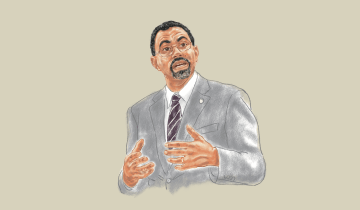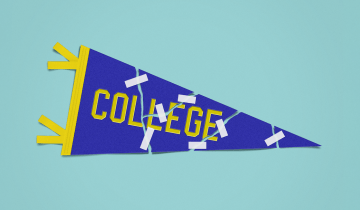For my generation, poverty was not a lifelong sentence because public higher education was accessible even for low-income students. I can still recall my transformative first visit to Michigan State University as a high school junior as part of a club trip—it rendered the idea of college concrete, sharpened my attendance goal and strengthened my resolve to enroll at MSU. My seventh grade English teacher triggered my college aspirations by suggesting I could earn a scholarship!
Times have changed. MSU’s tuition has risen 370 percent in real terms since 1970, and at the University of Texas at Austin, where I received my graduate degrees, tuition has soared a whopping 670 percent over the same period. Thanks to need-based financial aid, I graduated from MSU with no student debt. But today, families are expected to cover at least half of college costs, compared with about one-third in 1970. Hence for low-income families, the average net price of college is out of reach or incurs huge loan debt. In sum, decades of wage stagnation have squeezed out talented, economically disadvantaged Black and Hispanic students.
Stanford economist Raj Chetty and his collaborators have exposed many inconvenient facts about economic opportunity in the United States, most notably that the correlation between incomes of parents and their children remains strong—so much so that relative income mobility has been flat for decades. Even as the share of jobs requiring postsecondary credentials continues to expand, access to college has become more tightly coupled with family income, not only because tuition costs have been soaring, but also because public funding for higher education has been shrinking.
What’s more, the signature federal aid program for poor college students, the Pell Grant, has been serving larger shares of middle-class students, crowding out thousands of lower-income candidates. Although low-income students benefitted from the 22 percent increase in the size of the maximum grant under the Obama administration, middle class students have been crowding out the neediest because of unrealistic “expected family contributions.”
And reducing public funding for public higher education has had other consequences. Once a leader in the share of 25-to-34-year-olds with college degrees, the United States now trails the United Kingdom, Korea, Japan and Australia, among other industrialized nations, in four-year degree attainment. Despite their rapidly aging populations, neither Korea nor Japan slashed public funding for education during the Great Recession, but the United States was among a handful of nations that balanced state budgets on the shoulders of young people.
To reverse this 50-year trend, we need an unqualified recommitment to public education on the scale of the National Defense Education Act of 1958 that catapulted the United States to preeminence in higher education. Educational leaders must lead the charge to convince lawmakers that public funding of education at all levels—from pre-kindergarten to college—is mission critical to maintain economic competitiveness.
People, not products, are the most valuable form of wealth. Renewed investments in public higher education directed toward the twin goals of raising college completion rates and eliminating racial and income gaps will reignite the engines of economic mobility. But solving the affordability issue head-on requires targeting Pell Grants to low-income students by excising the expected family contribution for the talented poor. I, for one, would not have been able to attend under current rules. Higher education was my pathway from poverty and is a proven solution to social mobility.




